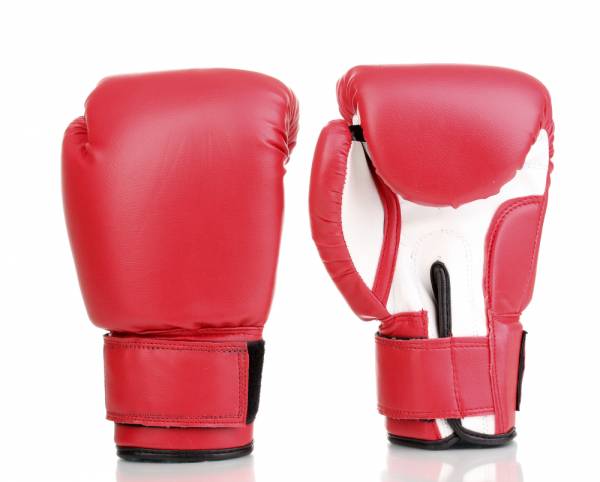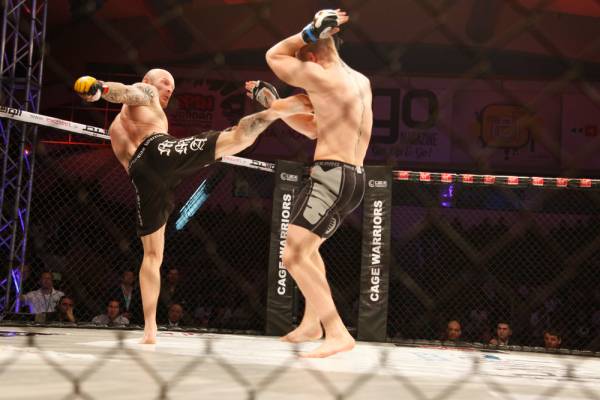In my last article I wrote about the reasons why training for maximal strength will have greater effect on speed production, up to a point, than training directly for speed for the majority of people. This time we’re going to look at some of the specifics of speed training, and their application for martial artists.
The most important thing in developing speed is that it is specific to the action required. What I mean by this is, if I want my punch to get faster I need to make sure that the action, or the mechanics, of punching remain the same.
Consider the following:
A regulation baseball weighs 148 grams. Training with both a lighter ball (57g) and a heavier ball (184g) provide improvements in throwing the regular sized ball. However, only the lighter ball gives the added benefit of increased precision when throwing the regulation ball, According to Egstrom et al, in their 1960 research. Research further shows that any ball heavier than 184 grams changes the mechanics so much that the groove of the pattern is lost and no skill increase – whether increased speed or accuracy – can be found.
Let’s put this in martial terms – a 148 gram ball is roughly equivalent to a 6 ounce glove. So, if I am looking to increase my hand speed for MMA, where the regulation glove is 4 ounces, I will do some of my training with slightly larger 8 ounce gloves and also look for a way to minimize the weight on my hand, perhaps choosing to go with just wraps sometimes.
Research on shot put shows that slight differences in the weight of the shot, by as little as 250g, yields great results in increasing force output and distance thrown, yet disappears when the weight used is changed by 500g. So it is very important to stay close to the weight used for that sport. For this reason it is advised that mimicking strikes with either ankle or hand weights will not help to develop speed or power in the strikes. While these may be a useful tool to develop strength endurance in the shoulder muscles, it is important that drills using these items be different enough from the action of striking that there is only slight resemblance to punching itself in order to minimize confusing the body and continually increase the skill of punching.
 For MMA fighters this has special context as it may mean that by using bigger (i.e. 16oz gloves) for sparring they may actually be harming the development of skill in striking for their sport. While it helps to reduce wear and tear on the fighter, wearing larger gloves is doing nothing to increase striking skill. This is a prime reason for individual training plans when looking to help a fighter, as some will need increases in technique, others in speed, others in power. Using one method or tool will only work for some and will be detrimental to others.
For MMA fighters this has special context as it may mean that by using bigger (i.e. 16oz gloves) for sparring they may actually be harming the development of skill in striking for their sport. While it helps to reduce wear and tear on the fighter, wearing larger gloves is doing nothing to increase striking skill. This is a prime reason for individual training plans when looking to help a fighter, as some will need increases in technique, others in speed, others in power. Using one method or tool will only work for some and will be detrimental to others.
It should be remembered that the increase of speed is achieved through training at optimal speed and that the speed of movement decreases over a long period of training. For this reason it is best to work speed during a fresh state and for short durations, as previously noted by Korobkov in 1953 and Monogarov in 1958. Speed skill must be trained first in a session before fatigue sets in, otherwise the fighter is only learning how to throw punches at sub-optimal speed.
Exercise modeling for speed development has shown that working a maximal strength exercise prior to the movement had a positive increase in the explosiveness of the movement. 3 sets of 3 repetitions with 80% of an athlete’s 1RM (or 80% of an athlete’s possible best for a single rep) in the barbell press sees increases of up to 40% in the distance thrown (with a 10 minute rest interval between the pressing and throws). This method, often called complex training, was used with great success by sprint guru Charlie Francis with his work with Ben Johnson where they would perform a set of nearly maximal squats and then after a rest go and do a 100m. It is rumored, although Francis denied it, that Johnson squatted 600lbs for a triple, twenty minutes before a world record run.
This method, however, is best reserved for athletes who are advanced in the gym as well as in their sport. For this type of training to have any real effect an athlete needs to be able to maximally recruit during a short duration, all out set of three repetitions. A better option would be the following:
 To use exercises that are relatively low load, approximately 20% of the 1RM alternated with exercises of up to 40% of 1RM in a ratio of 5 to 1. A good example of this might be the use of single arm bench press for 10 reps combined with medicine ball throws for 2 reps. (For a great example of this type of cyclic training for speed watch Georges St. Pierre working with strength coach Jonathon Chaimberg. Although they are using heavier load/slower movement to explosive movement/lighter load, the principle is the same.) While this volume of work may be low, the accumulation of fatigue will only serve to teach the body to operate at lower speed. Remember, training is to build the body, not to feel like you’re being smashed or worn out. While there is some necessary degree of fatigue from performing these exercises it is essential that it be built upon slowly. Quality of movement is king when speed is the goal, not quantity.
To use exercises that are relatively low load, approximately 20% of the 1RM alternated with exercises of up to 40% of 1RM in a ratio of 5 to 1. A good example of this might be the use of single arm bench press for 10 reps combined with medicine ball throws for 2 reps. (For a great example of this type of cyclic training for speed watch Georges St. Pierre working with strength coach Jonathon Chaimberg. Although they are using heavier load/slower movement to explosive movement/lighter load, the principle is the same.) While this volume of work may be low, the accumulation of fatigue will only serve to teach the body to operate at lower speed. Remember, training is to build the body, not to feel like you’re being smashed or worn out. While there is some necessary degree of fatigue from performing these exercises it is essential that it be built upon slowly. Quality of movement is king when speed is the goal, not quantity.
To tie this back to my previous article – all the research shows the initial development of maximal strength is key to ongoing improvement with any speed training method. While an initial increase can be seen by the early introduction of speed methods, such as plyometrics, this tapers off quickly and no further gains can be found. It therefore makes more sense to work primarily on maximal strength to create a solid base for all intended speed work.
Here are some final tips:
- Maximal strength is the most important aspect of speed development. Train it until gains start to taper off – research shows that this is around double bodyweight in either squat or deadlift. (And for grappling athletes the deadlift is likely a far better choice).
- Add small volumes of specific speed work into your training only when fresh and keep the volume low.
- Trying to increase speed by using heavy objects such as dumbbells in the hands, or even much heavier gloves, will alter the punching mechanics so much that no gains in speed will be seen, only increased risk of injury.
- Use of Complex Training methods involving slow/heavy to lighter/faster is a beneficial method to train to develop speed. The loads lifted must be of significant enough difference to get the body to still be attuned to higher levels of force development to allow it to remain fast from one exercise to the next. (Another great example I use for this is the kettlebell swing alternating from a heavy bell to a lighter bell).
If you missed it, read part one – Speed Kills: Proper Development of Speed for the Athlete.
Photos courtesy of Shutterstock.






